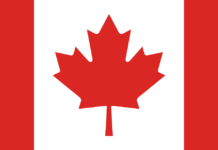Every year, thousands of people from across Ontario flock to Waterloo to celebrate St. Patrick’s Day. In 2019, the figure was 33,000, the largest ever, shutting down Ezra Street between King Street and Albert Street for a day of drinking and partying.
While the Ezra Street shutdown is an immensely popular event, many don’t know the real story behind St. Patrick’s Day.
Sure, you know about leprechauns and shamrocks, but what do those symbols really mean? Where did they come from?
Why do we drink so much every year on Mar. 17?
Lets find out what makes St. Patty’s so special.
Traditionally, St. Patrick’s Day is a religious celebration commemorating the death of Saint Patrick, Ireland’s foremost patron saint. According to tradition, Patrick was born in Roman Britain and kidnapped by Gaelic Irish raiders when he was a teenager.
After fleeing back home, Patrick became a priest. Later in life, he returned to Ireland, converting thousands of pagan Irish to Christianity.
According to legend, Patrick used a shamrock to describe the Holy Trinity to non-believers, giving birth to one of Ireland’s most recognizable symbols.
The very first St. Patrick’s Day parade took place in Boston in 1737 to celebrate the Irish culture of the colonies. In the early 20th-century, the tradition spread to Dublin, Ireland, and other American cities.
Today, parades are held throughout Europe, North American, and even Asia.
The day is a public holiday in the Republic of Ireland, Northern Ireland, and the province of Newfoundland and Labrador.
Traditional St. Patrick’s Day festivities include public parades and festivals, traditional Irish concerts, and the donning of green clothing and shamrocks.
Participants in parades usually include the military, marching bands, fire brigades, and youth groups.
Today, however, the festivities on Mar. 19 are more like a carnival, with loud music, elaborate costumes, and partying. In Ireland, an effort is made to use the Irish language, with the government even going as far as to declare the week of St. Patrick’s Day as “Irish Language Week.”
The elaborate festivities have drawn plenty of criticism over the years, with many arguing that the celebrations foster demeaning stereotypes of Irish people.
For example, leprechaun outfits were originally worn in the 19th-century as a derogatory caricature of Irish people.
Others criticize the celebration for its association with public drunkenness and disorderly conduct. Last year on Ezra Street, 514 partygoers were charged for various offences, and every year, property owners on the street complain about extensive damages to their houses.
Despite the criticisms, thousands will once again descend upon Ezra Street this Mar. 19 to party the day away. And if you do, maybe stay away from the leprechaun costumes and stick to the shamrocks to honour the Irish.



































